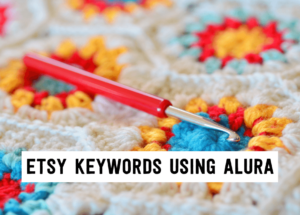
How to find the best Etsy keywords in 3 simple steps using Alura
If you want to be found in search results on Etsy, you need to optimize your product listing for SEO. And if you want to
join
Okayyyyyyyyy so Pinterest has been a bit of a dumpster fire the last couple of years.
We’ve all felt it – even Pinterest managers and Pinterest marketing agencies, people who work with Pinterest every day, have been losing their marbles behind the scenes, I can promise you that!
I know many people who just gave up, or have come very close to it.
And the reason so many of us have been shaking our heads and feeling like Pinterest was becoming such a dumpster fire . . . is because frankly, it was!
It’s not you, it’s not us – it’s Pinterest.
So today we’re going to talk about what the heck’s been happening on Pinterest, and if it’s still worth using Pinterest as part of your marketing strategy for your handmade business.
So, ready? Let’s dive in.
Okay, so let’s go through a little bit of history with Pinterest to help understand where we were, what’s happened, and where we are now. Because that’s really what’s going to tell us whether it’s still worth sticking with Pinterest or not.
So back in the good old days we had something called Board Booster. Board Booster was a software that was shut down in 2018 because it wasn’t an official Pinterest partner.
And honestly, if you were there during the Board Booster days, these were really like the golden days of Pinterest where you could have one pin for one product, repin it infinitely to as many boards as you wanted, and it just kept on delivering results.
It was really okay to repeat and loop your pin forever. So you truly had growth on autopilot, which was refreshing because you didn’t have to constantly create new content.
So that era was just wonderful. Buuuuuuuuuut, we started seeing a change with that after 2018.
Around 2019 Pinterest went public, and that’s when the roller coaster ride that has been Pinterest since then really started!
After the Board Booster era, everyone started using mostly Tailwind, which became the official Pinterest tool.
I like to call this era “The era of interval scheduling and board lists.”
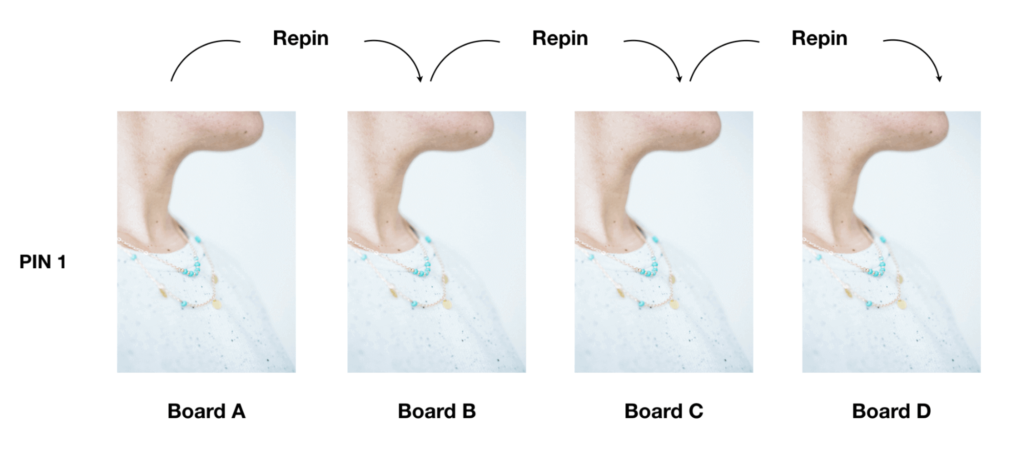
Now if you’re like “whaaat does that even mean” – put simply. . . during this phase, repinning your pins was king.
You could take one pin and repin it every few days or weeks to a good amount of boards. That pin would go on its merry journey onto a variety of boards, nice and easy.
You couldn’t repeat them forever like you could back in the Board Booster days, but you could still create a relatively small amount of content.
You didn’t have to create that many pins for your products then, you could repin them to different boards that were relevant to that product and expect really good results not only for the first pin that you would add on your platform, but also from each subsequent repin of that pin.
And that’s pretty much what the strategy was: create a pin and repin it to a bunch of different boards that were obviously relevant, and use group boards to get more visibility – everyone was getting really good results this way.
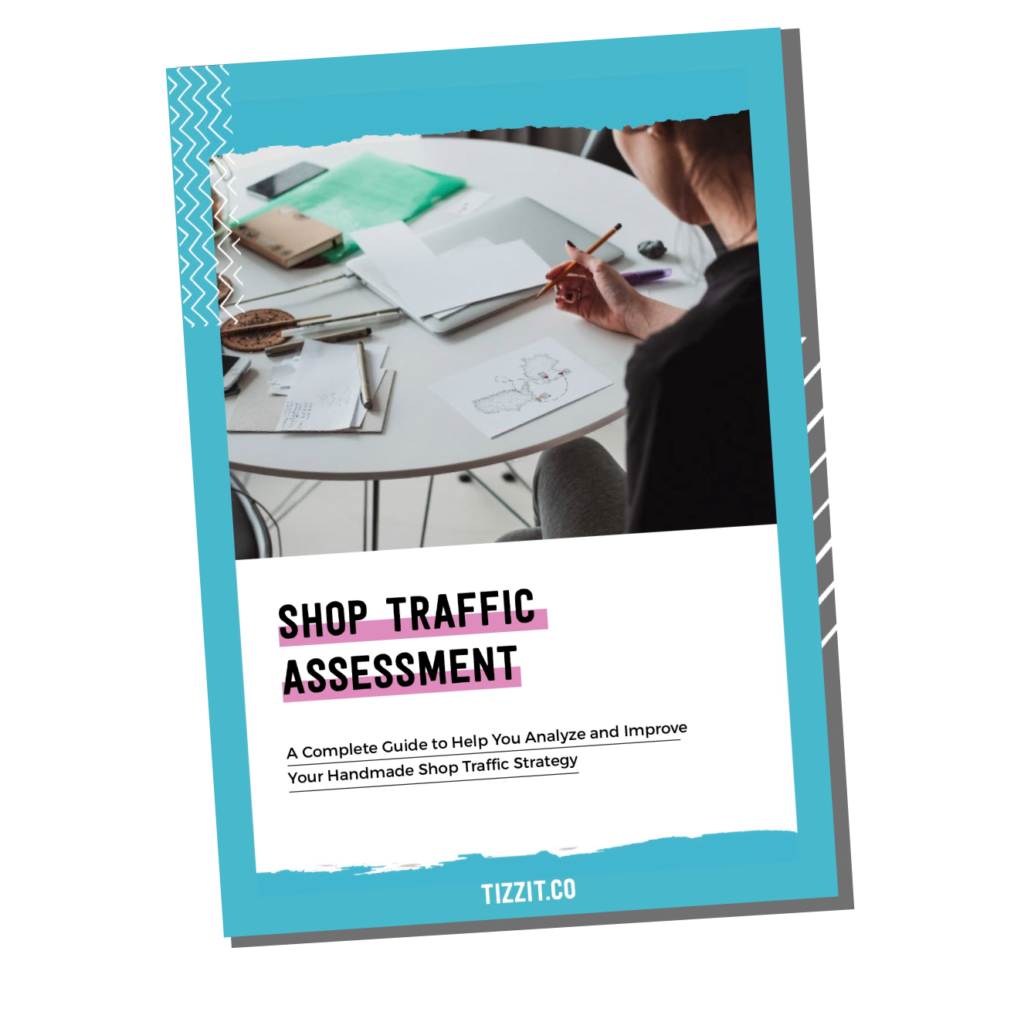
[free] handmade shop traffic guide
ARE YOU TIRED OF HEARING CRICKETS? TO MAKE SALES, YOU NEED PEOPLE TO VISIT YOUR SHOP, LET’S MAKE IT HAPPEN WITH THIS FREE TRAFFIC GUIDE.
Next Pinterest pivoted into what I call “The fresh content era,” and this is when they started to say they wanted us to create fresh content rather than constantly repinning the same pins on the platform.
Fresh content was (and still is) defined as an image that’s completely new on the platform – so a new pin design.
The new guidelines said that we shouldn’t pin the same pin to more than 10 boards and that we shouldn’t be pinning more than 25 pins per day total (fresh content and repins included, so all up) – and so we started seeing a shift; less repeating of existing content and more creation of new, fresh content.
Essentially at this point fresh content started being a priority, but repins were still a strong part of a good Pinterest strategy and could still generate great results.
Pinterest was changing, but it seemed that it was for the best and it was all very manageable; we still were getting and seeing results in a way that we could predict so all was good.
But then . . . the dumpster fire started and we all started wondering what the flying duck was happening!
Repins – this successful strategy of taking a pin and pinning it to up to 10 relevant boards that we had been doing on Pinterest for-EVER, stopped working the way we were used to.
Which was crazy because repinning had been something that was literally part of the Pinterest DNA up to this point.
We also started seeing spam bugs getting lots of accounts shut down for no good reason, and you had to appeal to get it back up again.
All of this was extremely frustrating and frankly VERY annoying.
Around the same time, we also saw the introduction of idea pins.
Pinterest initially called them story pins but for some reason (whoooooooo knows!!) changed the name to idea pins shortly after they were introduced. Classic Pinterest!
Idea pins are Pinterest’s version of short video content.
And so on top of shifting that balance from repins to more fresh content, this was yet another time-consuming thing that Pinterest was telling us we needed to do.
Next (as if this all wasn’t enough, right??!!) came the breakup between Pinterest and Etsy.
Now, I have a full article about that coming next week for you, so make sure that you sign up for the Tizzit free resource library, this will ensure you get notifications when I release new videos and blogs — and if you are reading this more than a week in the future then the link will be down below this article for you to read next.
In that article I will dive into the details of what the breakup means if you’re an Etsy seller, and my best tips to workaround this issue.
Now finally, very recently, Pinterest CEO Ben Silbermann stepped down and was replaced by Bill Ready, an ex-Google Commerce executive.
Pinterest also recently purchased “THE YES,” an AI powered shopping platform for fashion.
Each of these changes made it very clear that ecommerce was the future of Pinterest.
I remember when I first started teaching Pinterest, back in the Board Booster days, it was still very much a platform for bloggers so we had to find a bunch of tricks to make it work for ecommerce and optimize your sales – and it worked well – but nothing as optimized as what I think the future of Pinterest will look like for ecommerce sellers like yourself.
In my opinion, these changes that show a movement toward ecommerce are GREAT news. Even if it’s been super messy in the last couple of years, I’m excited about where the platform is going.
But it’s not going to happen immediately.
So that brings us to the million-dollar question: In the meantime, is it still worth staying on Pinterest?
My personal opinion is yes.
I think you’ve seen the biggest pivots and made it through them, so it would be silly to stop and throw in the towel now that you’ve probably ridden out the biggest dips on the Pinterest roller coaster.
My opinion is this:
Platforms change, that’s the name of the game when it comes to online marketing. Etsy changes (don’t get me started), Instagram changes (Hellooooo video!), Tik Tok is, well, new, Facebook is certainly not what it was 10 years ago . . . you get the gist – each one is constantly changing.
I think that if you’re happy with the general direction that Pinterest seems to be going toward then yes, stay through the changes or jump on board now before many more ecommerce sellers actually jump on the platform.
Jumping ship to another platform will not get you results faster as you’ll likely start from scratch there, and that other platform will go through changes too!
Now, if on the contrary you don’t believe Pinterest is a long-term fit for your business, then absolutely go and work on a platform you think is a better match instead!
It’s really about asking yourself whether you think your goals align with Pinterest’s vision.
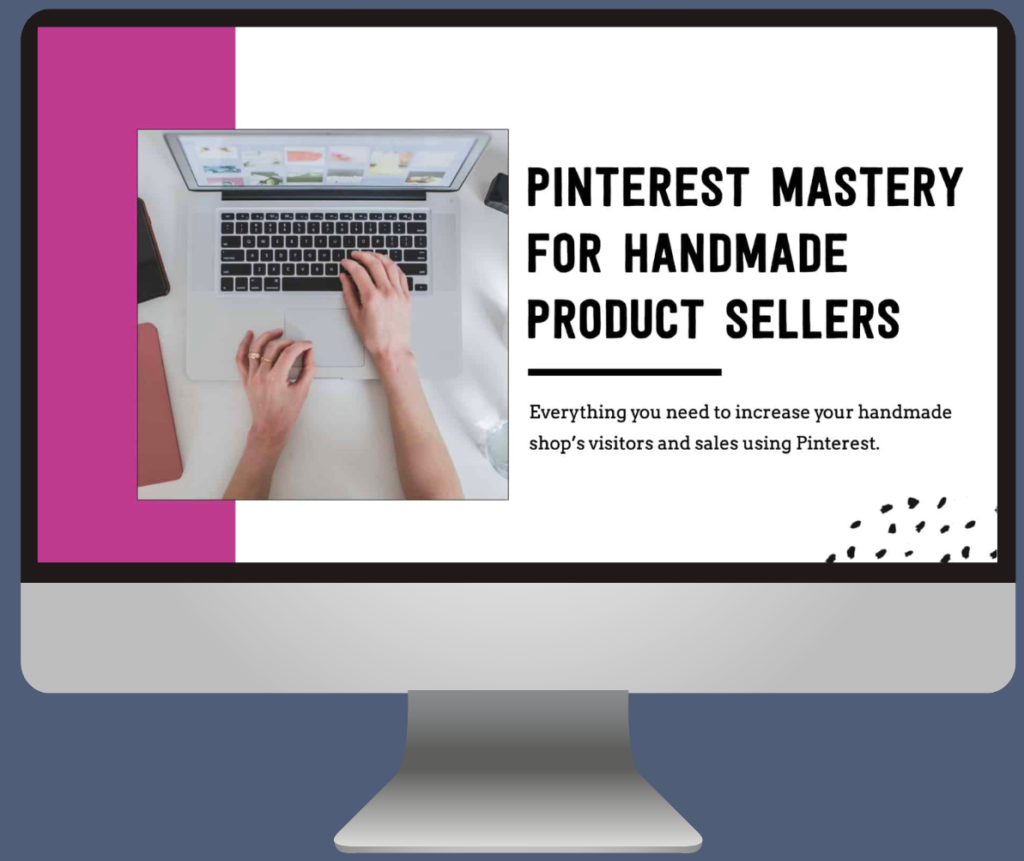
GET THE pinterest mastery for handmade sellers
READY TO MAKE PINTEREST WORK FOR YOU… FOR GOOD?
THE PINTEREST MASTERY FOR HANDMADE SELLERS COURSE WILL HELP YOU BUILD A SOLID PINTEREST MARKETING FOUNDATION + GET MORE SALES ↓
And on that topic – There is one thing that I mentioned earlier in this article that I want to take the time to go deeper into in next week’s article because it’s very important, and it’s for those of you who are selling on Etsy specifically.
Even though Etsy and Pinterest kind of broke up, that’s not to say that you can’t use Pinterest as part of your Etsy marketing strategy BUT there are a few important things you need to know to decide whether this is still the platform for you and if you do, how to workaround this break up.
And next week I want to show you how.
If you are reading this article in the future, the link will be down below.
Now for those of you who are ready to overhaul your Pinterest strategy with stuff that actually works right now, or want to learn how to get started with Pinterest, take a look at my Pinterest mastery course – it is designed for handmade sellers, artists, and makers and is up to date on the latest Pinterest changes so check it out!
Thanks for reading, and until next time, aurevoir!
you might also like…
related articles

If you want to be found in search results on Etsy, you need to optimize your product listing for SEO. And if you want to
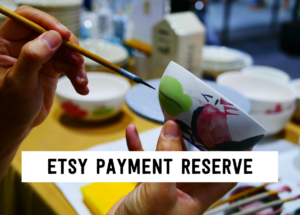
There has been a lot of talk in the Etsy community — and I mean A LOT of talk — about Etsy’s payment account reserve
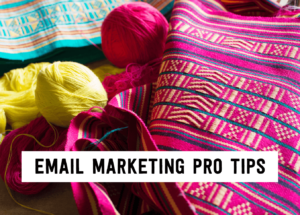
Anyone who knows me knows that I am a HUGE advocate for using email marketing to grow and scale your handmade business. But you may
Sign up below and get instant access to a collection of FREE practical guides, workbooks, and checklists that will help you start, grow and profit from your handmade shop. (without pulling your hair out!).
disclaimer
subscribe to youtube
become a member
get in touch
We acknowledge and give thanks to the Budawang and Yuin people, the Traditional Owners of the land we work and live on. We pay our respects to all Aboriginal and Torres Strait Islander Peoples and elders past, present and emerging.
4-step Maker’s Roadmap System
Library of In-Depth Courses and Training
Live Monthly Coaching Sessions
A Supportive Online Community
close
We hate spam too. Unsubscribe at any time.
close
We hate spam too. Unsubscribe at any time.
close
We hate spam too. Unsubscribe at any time.
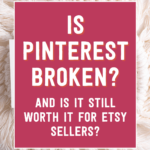


[Free] handmade shop traffic guide